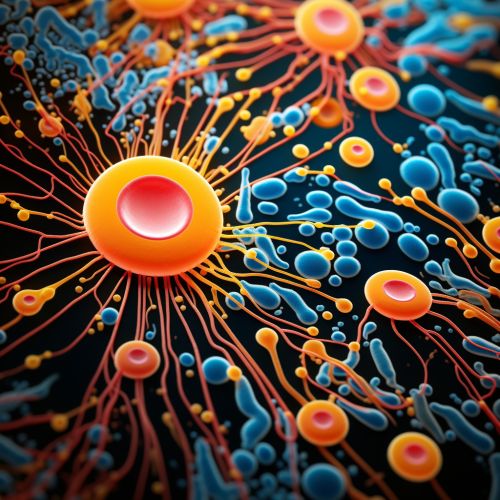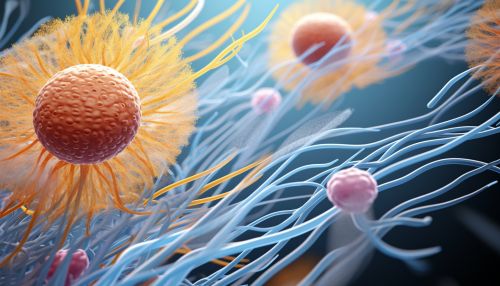Prokaryotic motility
Introduction
Prokaryotic motility refers to the various mechanisms by which prokaryotic organisms move. Unlike their eukaryotic counterparts, prokaryotes lack a structured cytoskeleton and motor proteins for movement. Instead, they rely on different structures and mechanisms, including flagella, pili, and gliding motility.


Flagellar Motility
Flagellar motility is the most common form of prokaryotic motility. Prokaryotic flagella are long, whip-like appendages that rotate like propellers, enabling the cell to swim in liquid environments. The rotation of the flagellum is powered by a flow of protons or sodium ions across the cell membrane, a process known as chemiosmosis.
Structure of Flagella
The structure of prokaryotic flagella is distinct from that of eukaryotic flagella. It consists of three main parts: the filament, the hook, and the basal body. The filament, composed of the protein flagellin, extends from the cell surface and forms the propeller. The hook acts as a flexible coupling between the filament and the basal body, which is embedded in the cell envelope and functions as the motor.
Flagellar Movement
The movement of prokaryotic flagella can be either clockwise or counterclockwise. When the flagella rotate counterclockwise, they form a bundle that propels the cell forward in a "run". When they rotate clockwise, the bundle disperses, causing the cell to "tumble" and change direction. This "run and tumble" behavior allows prokaryotes to move towards favorable conditions, a process known as chemotaxis.
Pili and Twitching Motility
In addition to flagella, some prokaryotes possess shorter, hair-like appendages called pili (singular: pilus). While pili are primarily known for their role in bacterial conjugation, certain types of pili, known as type IV pili, enable prokaryotic cells to move along solid surfaces in a process known as twitching motility.
Structure of Pili
Type IV pili are composed of a protein called pilin. They are anchored to the cell membrane and can be extended and retracted by the addition and removal of pilin subunits at the base of the pilus.
Twitching Movement
During twitching motility, the pilus extends, attaches to a surface, and then retracts, pulling the cell forward. This jerky, intermittent movement is the reason for the term "twitching". Like flagellar motility, twitching motility can also be influenced by chemotaxis.
Gliding Motility
Gliding motility is a form of prokaryotic movement that does not involve appendages like flagella or pili. Instead, cells glide smoothly along solid surfaces. The exact mechanisms of gliding motility are not fully understood and appear to vary among different types of prokaryotes. Proposed mechanisms include the secretion of slimy substances that propel the cell forward, and the movement of cell surface proteins.
Conclusion
Prokaryotic motility is a complex and diverse phenomenon, involving a range of structures and mechanisms. Understanding these mechanisms not only provides insights into the basic biology of prokaryotes, but also has implications for fields such as microbial ecology, infectious disease, and biotechnology.
